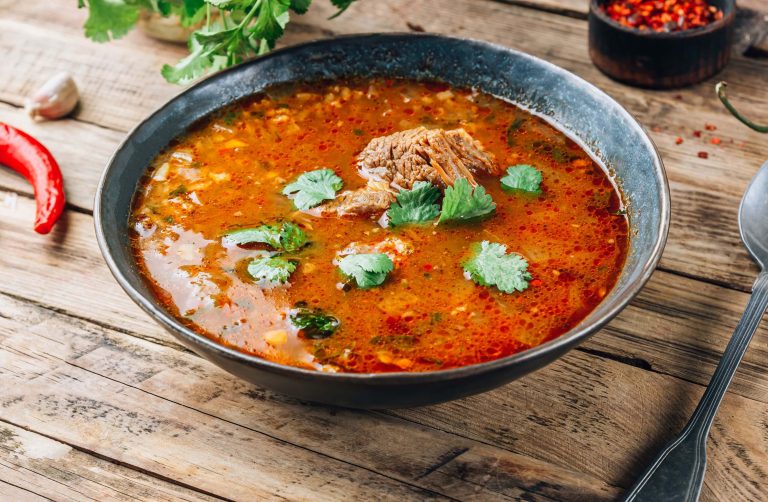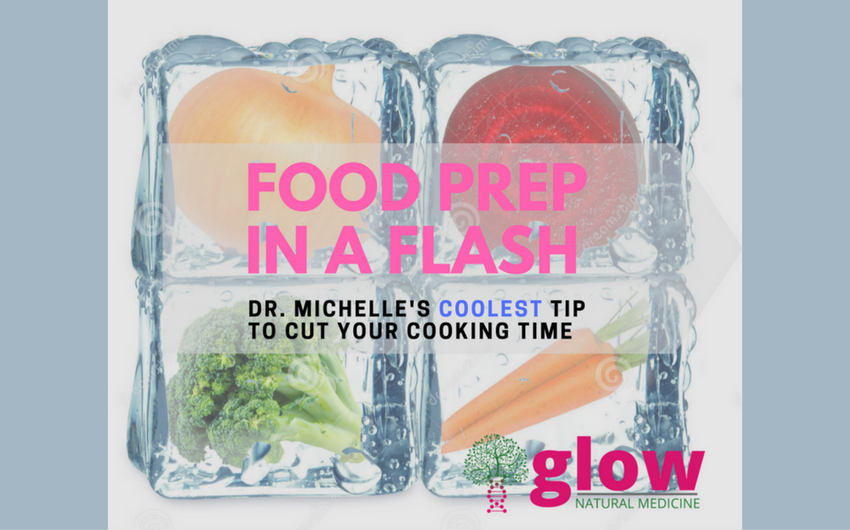

Slash Your Food Prep Time With This Health Food Hack
Slash Your Food Prep Time with This Health Food Hack.
Preparing healthy meals for your family can feel like a full-time job. Shopping for fresh fruits and vegetables every few days and then washing, chopping, prepping and storing all that produce can feel like a real time-suck.
Plus, no matter what plan you are following – vegan, paleo, raw, whole 30, or one of my therapeutic plans – there’s no escaping the fact that the majority of your foods will be plant based.
My time saving (and sanity saving) health food hack is (drum roll please): Use frozen and canned produce
And here is a “not-so-dirty” little secret: Frozen (and some canned foods) are often just as healthy as fresh foods (if not healthier). Yep, that’s right, I said it.
In a review published in theJournal of the Science of Food and Agriculture, they found that fruits and vegetables are generally about 90 percent water and start dehydrating and losing nutrients immediately after they’re harvested. For example, spinach loses 75 percent of its vitamin C (ascorbic acid) within seven days. With each day that passes as they sit on trucks, fresh fruits and vegetables are – as gross as it might sound — decomposing.
While modern technology allows harvested produce, i.e. “Fresh” Frozen Fruits and Vegetables, to be flash-frozen and processed on-site, at the peak of freshness. This may not have been true 20 years ago, but it is now!
In addition to the nutritive benefits of frozen fruits and veggies, having a supply on hand solves some common problems such as:
- Waste! I’m sure you’ve experienced fresh produce that never makes it out of the crisper drawer until it’s rotten and needs to be thrown away. How heart breaking when we have to throw once beautiful kale away without ever having a bite (yep, I did this the other day – super sad face here)
- Organic berries that go moldy a day after bringing them home from the store! This is one of my biggest pet peeve’s (grrr…)!
The solution is (you guessed it): frozen kale and strawberries
But this doesn’t mean you should ditch fresh fruits and vegetables entirely, of course. Fresh, local produce helps keep your diet varied. Plus, they have different microbes, phytonutrients, and compounds that help support your immune system and other key body processes. So, it’s still a good idea to eat a wide variety so you’re exposed to as many of them as possible.
Plus, it’s a great excuse to get out to a farmer’s market and get your kids involved in picking their own veggies for the next meal.
With that said, the convenience of frozen and canned foods can help you get that variety, too. Plus, it takes away any excuse you may have of them being inconvenient. Furthermore, according to the National Institutes of Health and the National Cancer Institute, you may need all the help you can get, since a recent review found that 87 percent of the population eats less than the recommended amounts of vegetables per day.
Remember, eating more fruits and vegetables is a key part of a balanced diet. And with all the options available — fresh, frozen, canned, pre-sliced, pre-cooked, etc. — there’s really no reason you can’t get your recommended servings in.
So, without further ado, here are some of my favorite go-to frozen and canned fruits and veggies:
Berries
Strawberries, blueberries, and raspberries are packed with vitamin C, fiber, potassium, and anthocyanins, which are compounds that can help support a variety of body functions. And who doesn’t like berries? Seriously?
When out of season, organic berries can be crazy expensive and hard to find, so frozen berries are great to have on hand year-round — just make sure they don’t have any added sugars. Throw them in a shake, a batch of blender muffins, or a yogurt parfait. I’m getting hungry thinking about it!
Mango
In addition to being delicious, this tropical fruit has a ton of vitamins C, A, K, E, and folate. But getting the most out of a fresh mango isn’t easy, and many people lose a lot of the fruit trying to cut it. Plus, mangoes are expensive, they’re often sold underripe, and they tend to spoil quickly.
Soooo… you can skip the fresh and go straight to frozen. In addition to smoothies, mango is also a great topping for yogurt or chia pudding.
Cauliflower
Frozen cauliflower is a great staple to have on hand. Cauliflower is an incredibly versatile veggie, so there’s no end to the dishes you can add it to.
Cauliflower is tasty roasted on its own or add it to any soup to make it creamier. It’s also a delicious super-low calorie rice alternative. You can buy cauliflower rice at most grocery stores or make your own — just cut a head into small pieces and toss them into a food processor until it resembles rice. Cauliflower also makes a great pizza crust (who knew!) – the perfect way to get your kids (and your husband) to eat their veggies.
Kale
As much as I love kale, it can be a bit of a pain in the butt. Many people skip kale because of how careful you need to be when cleaning it, and the time it takes to stem and chop it (uhg!). Instead, it’s so much easier just to buy it frozen. You can enjoy the benefits of kale’s vitamins A, C, K, calcium, and potassium by tossing chopped kale into simmering tomato sauce, into smoothies, or just sauté it for a three-minute side dish with some salt, pepper, garlic, and a bit of lemon juice. YUM!
Broccoli
Broccoli is my go-to side dish. My freezer is packed with frozen broccoli (I mean packed!). Why? Because it’s packed with vitamins A, C, K, and folate, plus potassium, magnesium, and calcium. Another bonus? Its versatility: It can stand alone as a side or you can toss it into stir-fries, soups, casseroles, turn it into healthy broccoli tots, or simply roast it with garlic.
Squash
Whole butternut squash can be ridiculously time consuming to cut and peel. So frozen and cubed, it’s a godsend (and the only way it’s making it to our dinner table!!). It’s also a great source of fiber, vitamins C, E, and beta-carotene, an antioxidant that the body converts into vitamin A. You can roast them for an easy side dish or cook up a big batch of spicy squash soup (yum…).
Onions
Once you discover the joy of frozen chopped onions, you’ll never be without them. Skip the most tedious step of cooking (and the crying) by tossing frozen onions into your dishes.
Now let’s move on to canned fruits and vegetables (look for bisphenol A (BPA)-free cans to avoid toxin exposure)
Pumpkin
They’re big and cumbersome, so most people steer clear of cutting into whole pumpkins unless they’re making jack-o’-lanterns. But as luck would have it, it doesn’t have to be Halloween for you to enjoy pumpkin’s benefits.
One half-cup of canned pumpkin (pure pureed pumpkin, not pumpkin pie filling) contains only 40 calories, 4 grams of fiber, and has close to 100 percent of the recommended daily allowance of vitamin A. It’s great for boosting nutrients in a ton of dishes. Canned pumpkin added to pancake batter makes them fluffier, is a great base for grain free muffins and breads, and it’s also delicious stirred into oatmeal.
Tomatoes
Because they’re preserved with heat, canned tomatoes contain four times the lycopene — a major antioxidant — than fresh tomatoes do. In addition, easy-to-use canned tomatoes contain lutein, beta-carotene, vitamin C, and potassium.
Tips to Make the Most out of Frozen Fruits and Veggies
Frozen fruits and veggies can vary in terms of taste depending on the brand, so experiment with different kinds before deciding you hate a particular frozen vegetable or fruit. Look for organic brands, since they will have the best quality. As well:
- Make sure your freezer isn’t too cold, which can make frozen veggies taste terrible.
- If you don’t plan on using an entire package, store the rest in an airtight container to prevent freezer burn. Mark the date on it and toss them after nine months to a year.
- Posted
- in Diet and Nutrition
- By Michelle






Comments are closed for this article!